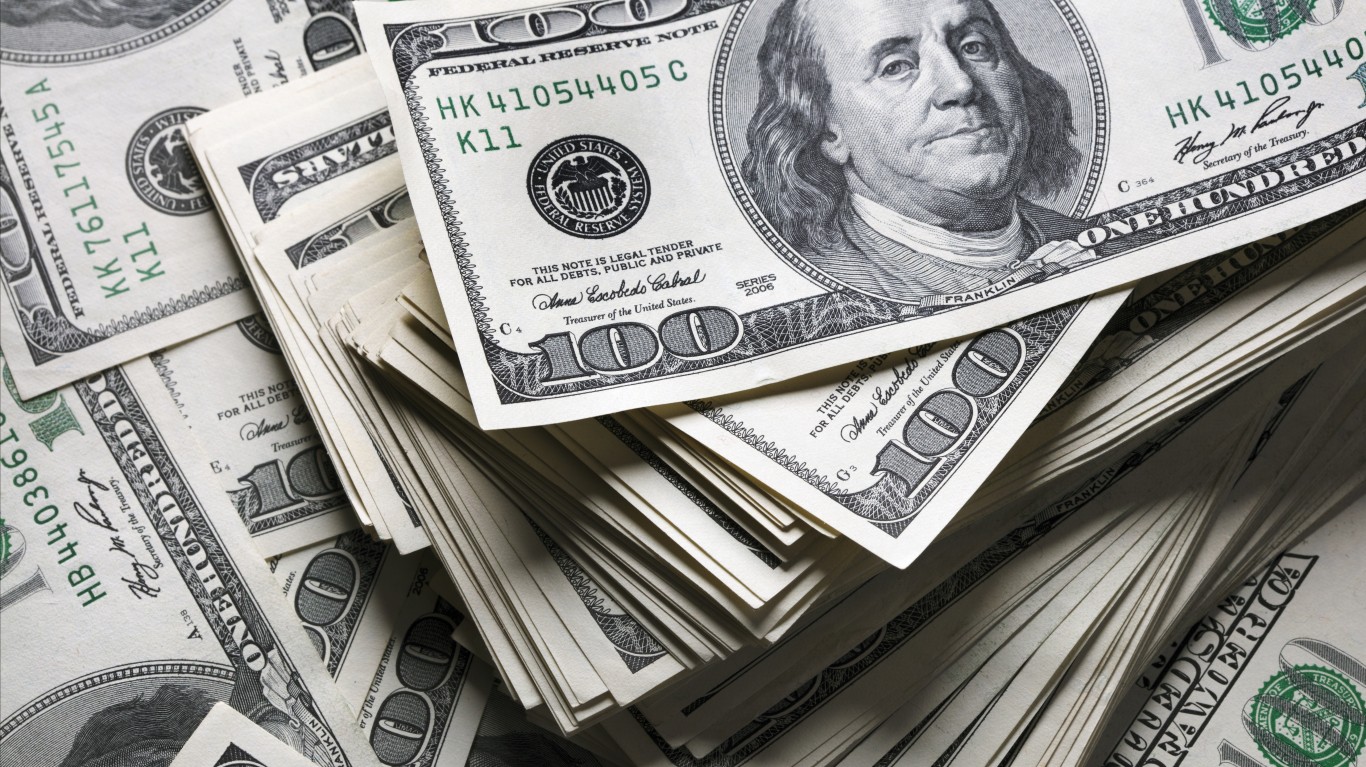Economy
Will $6 Trillion in Global Quantitative Easing Be Enough to Beat the 2020 Recession?

Published:

Now that the U.S. Federal Reserve has committed to yet another round of massive asset purchases, it’s important to understand just how much quantitative easing there is in the world. On top of the United States, other central banks are seeing their balance sheets expand rapidly as they have been buying countless amounts of public assets and private assets.
Central banks are greatly increasing their lending to financial institutions to fight against the damage that the coronavirus is having on the economy. According to FitchRatings, quantitative easing asset purchases are likely to hit a total of $6 trillion in 2020.
24/7 Wall St. has looked into reports at Fitch, as well as from central banking and other related websites to tally up just how much new quantitative easing funds and efforts is being pumped into the global economy in 2020.
For some context, this $6 trillion amount would be nearly that same as roughly half of all QE efforts made from 2009 through 2018. Central banks’ balance sheets are expanding extremely rapidly as they buy up large quantities of public and private assets and increase their lending to financial institutions in their efforts to counter the damaging economic impact of the coronavirus.
In the United States, the pre-pandemic balance sheet was recently about $4.3 trillion. That figure was up to $6.5 trillion by April 23. The Federal Reserve purchased a combined sum of $1.4 trillion in U.S. Treasuries, and that exceeded the combined QE-waves of buying from the financial crisis a decade ago.
Where the quantitative easing is harder to calculate versus raw securities purchases is that there have been currency swap programs and credit facilities with other central banks as the markets had been in disarray in March.
The European Central Bank has purchased roughly 120 billion euro in a four-week period from mid-March through mid-April 2020. As of the end of 2019, its holdings of securities of euro area residents denominated in euro was roughly 2.85 trillion before adding in additional assets held. For monetary policy purposes For context, they had been buying roughly 20 billion euro each month prior to the COVID-219 pandemic. The European Central Bank implemented an additional 870 billion euro for quantitative easing in mid-March in an effort to lessen the economic impact that the shutdowns and deaths are causing on the economy.
To put more context into these quantitative easing efforts, FitchRatings calculated that the U.S. Federal Reserve balance sheet may approach $10 trillion and that the European Central Bank’s balance sheet could easily grow above 6 trillion euro by the end of 2020.
Quantitative easing efforts are looking high from other central banks.
The Peoples Bank of China has been formally lowering its interest rates and it has even lowered reserve requirements for urban commercial banks and for rural lenders in March.
Other central banks with a focus on quantitative easing and asset buying have been identified below, but these are not the only central banks involved:
The Bank of Japan is currently target exchange-traded funds (ETFs) to a current equivalent of $118 billion while the bank will also be making loans to companies that have been impact by the coronavirus outbreak.
The Bank of England will buy 200 billion pounds worth of additional Gilts while also growing its balance sheet.
The Bank of Canada has expanded its balance sheet and the bank has signaled previously that it would target bond issues issued by its 10 provinces after already targeting provincial money-market paper..
The Reserve Bank of Australia saw a net drop in total assets and liabilities as of Wednesday, April 22, but is holdings of Australian dollar investments (securities) rose by about A$4 billion to $A177.1 billion.
Adding up all of the holdings from central banks’ balance sheets is not an impossible task. Where this job about a full read-thru on total global quantitative easing is harder to calculate is when central banks (including the U.S. Fed) offer temporary facilities and other short-term stabilization efforts to ensure liquidity or to ensure that financial markets operate efficiently. These efforts are very important when they are needed, but they are short-term efforts that often get overlooked versus raw assets and securities owned by central banks.
This seems like as good of a time as any to be in the business of selling printing presses.
The average American spends $17,274 on debit cards a year, and it’s a HUGE mistake. First, debit cards don’t have the same fraud protections as credit cards. Once your money is gone, it’s gone. But more importantly you can actually get something back from this spending every time you swipe.
Issuers are handing out wild bonuses right now. With some you can earn up to 5% back on every purchase. That’s like getting a 5% discount on everything you buy!
Our top pick is kind of hard to imagine. Not only does it pay up to 5% back, it also includes a $200 cash back reward in the first six months, a 0% intro APR, and…. $0 annual fee. It’s quite literally free money for any one that uses a card regularly. Click here to learn more!
Flywheel Publishing has partnered with CardRatings to provide coverage of credit card products. Flywheel Publishing and CardRatings may receive a commission from card issuers.
Thank you for reading! Have some feedback for us?
Contact the 24/7 Wall St. editorial team.